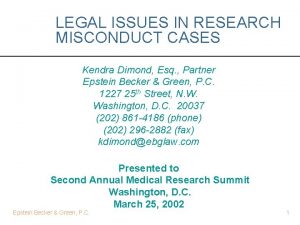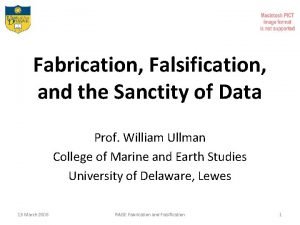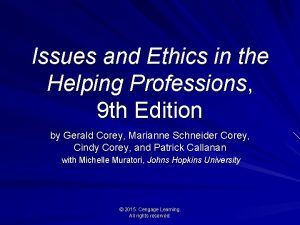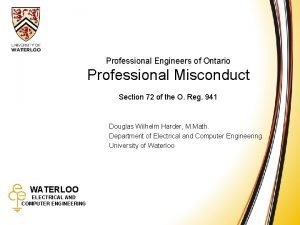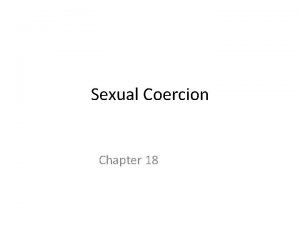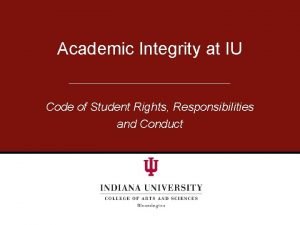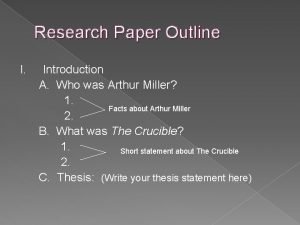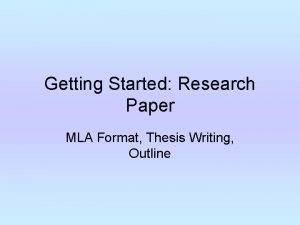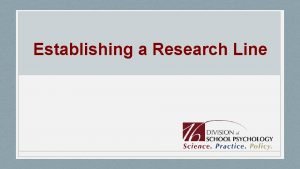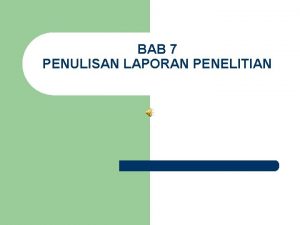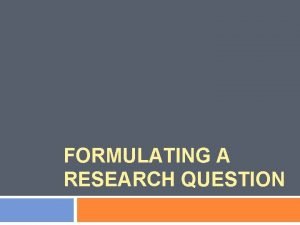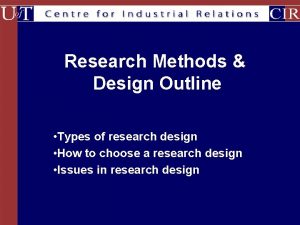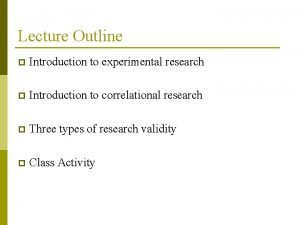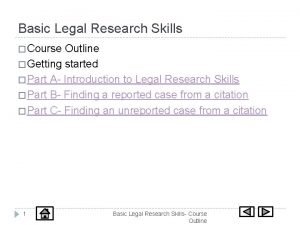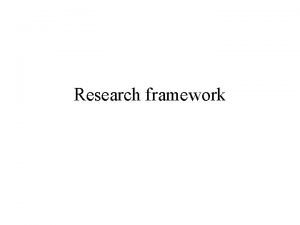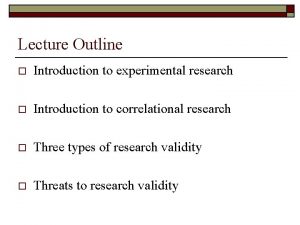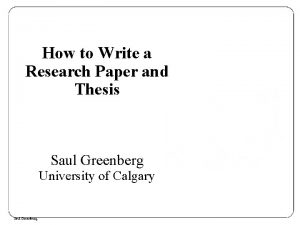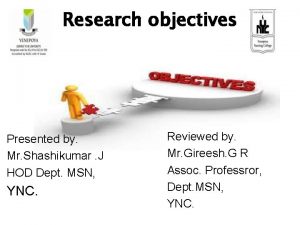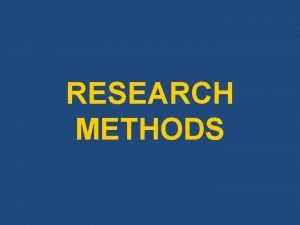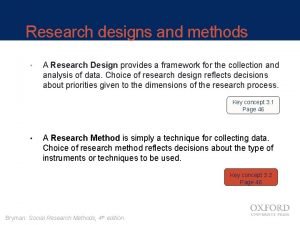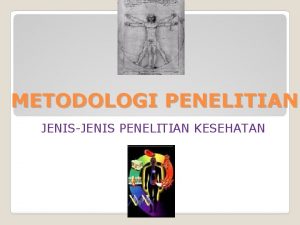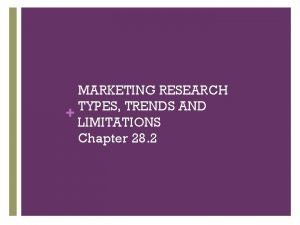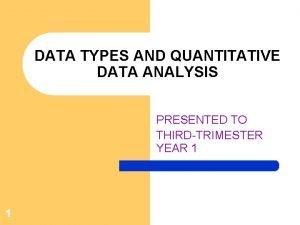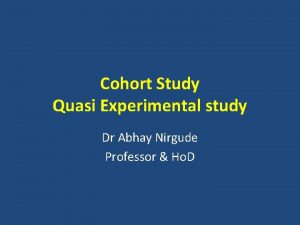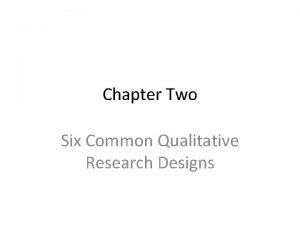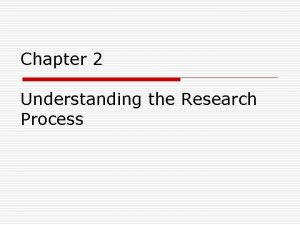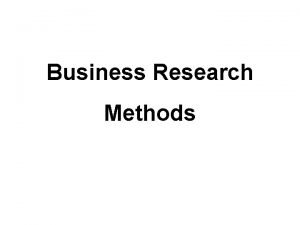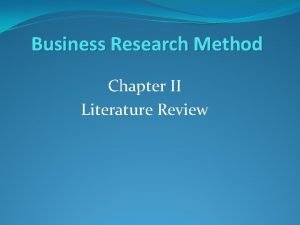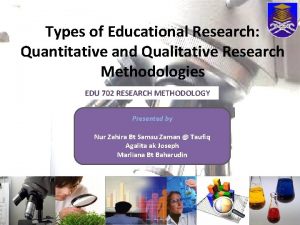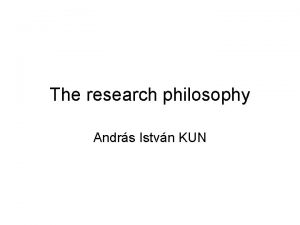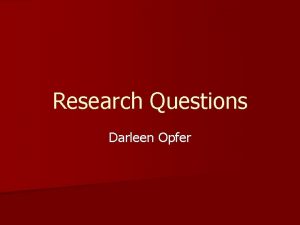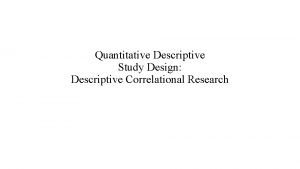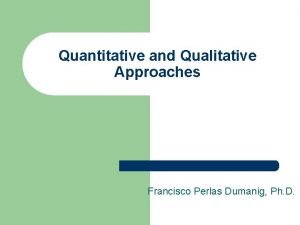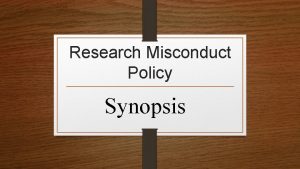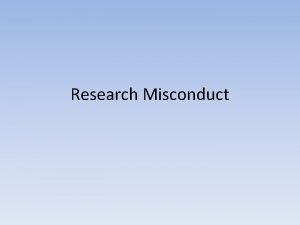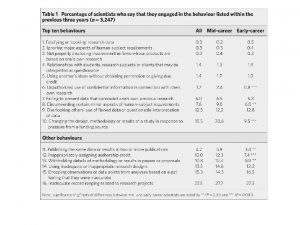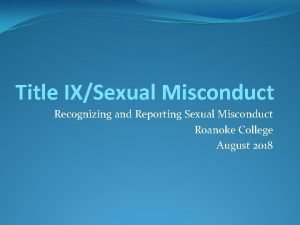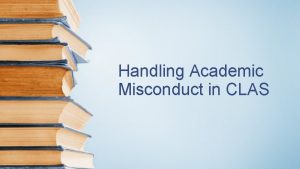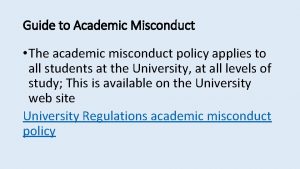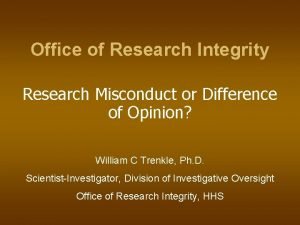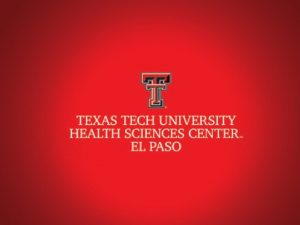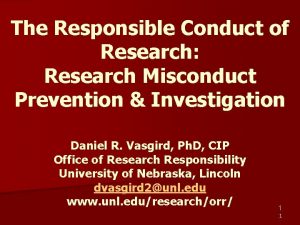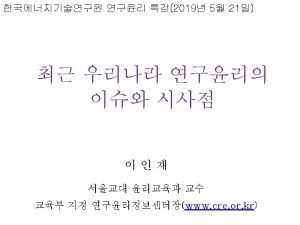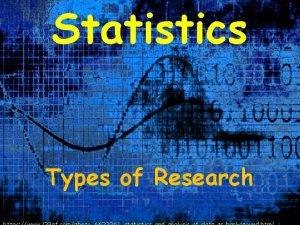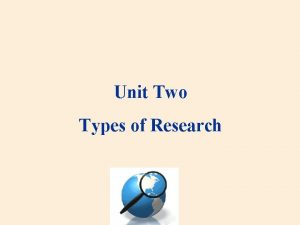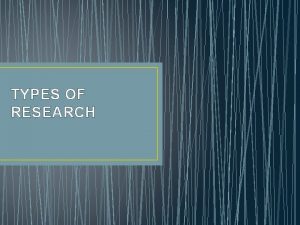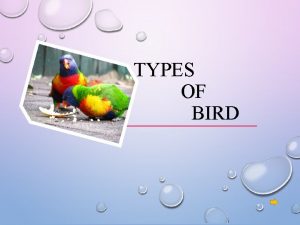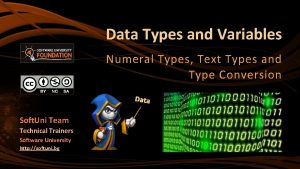Research Misconduct Outline What is research misconduct Types





![Plagiarism Plagiarism of authorship Plagiarism of copying Patch work[Paraphrase] Paraphrasing Plagiarism ◦ Do not Plagiarism Plagiarism of authorship Plagiarism of copying Patch work[Paraphrase] Paraphrasing Plagiarism ◦ Do not](https://slidetodoc.com/presentation_image_h2/4feda6f052af4fe062bf7eefe49b9c7c/image-6.jpg)







































- Slides: 45


Research Misconduct: Outline What is research misconduct? Types of research misconduct? Dealing with research Misconduct Publication ethics? What is salami publication? How to detect salami publications? Dealing with salami publication 2

Scientific/Research misconduct is defined as fabrication, falsification, or plagiarism in proposing, performing, or reviewing research, or in reporting research results. 3

. . Scientific misconduct includes but is not necessarily limited to ◦ Data fabrication; ◦ Data falsification including deceptive manipulation of images ◦ Plagiarism http: //www. icmje. org 4

. . Scientific misconduct Fabrication: Making up data or results and recording or reporting them. Falsification: Manipulating research materials, equipment, or processes, or changing or omitting data or results such that the research is not accurately represented in the research record. Plagiarism: The appropriation of another person's ideas, processes, results, or words without giving appropriate credit. 5
![Plagiarism Plagiarism of authorship Plagiarism of copying Patch workParaphrase Paraphrasing Plagiarism Do not Plagiarism Plagiarism of authorship Plagiarism of copying Patch work[Paraphrase] Paraphrasing Plagiarism ◦ Do not](https://slidetodoc.com/presentation_image_h2/4feda6f052af4fe062bf7eefe49b9c7c/image-6.jpg)
Plagiarism Plagiarism of authorship Plagiarism of copying Patch work[Paraphrase] Paraphrasing Plagiarism ◦ Do not paraphrase poorly Unintentional Plagiarism ◦ Paraphrasing poorly ◦ Quoting poorly ◦ Citing poorly Self plagiarism 6

Primary control: Tools Plagiarism Detector: Online Web. Pages e. TBLAST: a text-similarity based search engine Google is excellent; Do search ◦ Consider bold words Plagtracker. com Plagscan. com/seesources i. Thenticate 7

. . Primary control: Tools M Karami, Ph. D 8

. . Primary control: Tools 9

10

M Karami, Ph. D 11

12

https: //app. ithenticate. com/en_us/ login 13

https: //app. ithenticate. com/en_us/ login 14

Similarity Vs. Plagiarism Similarity is different from copy/paste and patch working! 15

Dealing with possible misconduct 11. 1. Editors have a duty to act if they suspect misconduct or if an allegation of misconduct is brought to them. ◦ This duty extends unpublished papers. to both published and 11. 2. Editors should not simply reject papers that raise concerns about possible misconduct. They are ethically obliged to pursue alleged cases. 11. 3. Editors should follow the COPE flowcharts where applicable. 16

. . Dealing with possible misconduct 11. 4. Editors should first seek a response from those suspected of misconduct. ◦ If they are not satisfied with the response, they should ask the relevant employers, or institution, or some appropriate body (perhaps a regulatory body or national research integrity organization) to investigate. 11. 5. Editors should make all reasonable efforts to ensure that a proper investigation into alleged misconduct is conducted; if this does not happen, editors should make all reasonable attempts to persist in obtaining a resolution to the problem. This is an onerous but important duty. 17

Publication ethics 18

Criteria of Authorship The ICMJE recommendation lists four criteria of authorship: Substantial contributions to the conception of design of the work, or the acquisition, analysis or interpretation of data for the work Drafting the work or revising it critically for important intellectual content Final approval of the version to be published Agreement to be accountable for all aspects of the work in ensuring that questions related to the accuracy or integrity of any part of the work are appropriately investigated and resolved. 19

. . Authorship Ghost Author ◦ May meet authorship criteria or not Guest or Gift Author ◦ Without authorship criteria 20

Ghost authors Professional writers (often paid by commercial sponsors) whose role is not acknowledged. ◦ potential conflict of interest People who made a significant contribution to a research project (and fulfill the ICMJE criteria) but are not listed as authors. 21

Gift authors People who are listed as authors but who did not make a significant contribution to the research and therefore do not fulfill the ICMJE criteria. ◦ senior figures (e. g. heads of department) 22

. . Gift authors Another type of gift author is a colleague whose name is added on the understanding that s/he will do the same for you, regardless of your contribution to swell your publication lists 23


Duplicate Submission Authors should not submit the same manuscript, in the same or different languages, simultaneously to more than one journal. The rationale for this standard is the potential for disagreement when two (or more) journals claim the right to publish a manuscript that has been submitted simultaneously to more than one journal, and the possibility that two or more journals will unknowingly and unnecessarily undertake the work of peer review, edit the same manuscript, and publish the same article. http: //www. icmje. org 25

Duplicate AND Redundant publication Duplicate publication is publication of a paper that overlaps substantially with one already published, without clear, visible reference to the previous publication. http: //www. icmje. org 26

27

Salami is a type of cured sausage consisting of fermented and air-dried meat, typically beef or pork. Historically, salami was popular among southern and central European peasants because it stores at room temperature for up to 40 days once cut, supplementing a potentially meager or inconsistent supply of fresh meat. 28

Salami 29

Salami publication or segmented publication is a distinct form of redundant publication which is usually characterized by similarity of hypothesis, methodology or results but not text similarity. These aspects of publications are not objectively detected by software applications and therefore present a serious threat to publication ethics. 30

Salami publication Slicing of data from a single research process into different pieces creating individual manuscripts from each piece to artificially increase the publication volume. http: //www. icmje. org 31

How to detect salami publication? There is no software application or algorithm for detection of salami publication. ◦ Identifying this type of publication misconduct is complex because salami publications do not often include text plagiarism. Salami publications often report on identical or similar sample size, hypothesis, research methodology and results, and very often have the same authors. 32

Some situations when salami publication or redundant publication is allowed Manuscripts based on the same or similar patient sample can be published in more than one journal for a different population of readers, for example from an epidemiologist’s or clinical chemist’s point of view. Publication of professional guidelines in two or more different languages is also not considered to be salami or duplicate publication when it is done with the authors’ or publishers’ consent. 33


. . Some situations when salami publication or redundant publication is allowed Follow up investigations can be published using parts of already published results ◦ when the new manuscript largely contributes new scientific knowledge. 35

. . Some situations when salami publication is allowed In case of large epidemiological studies or randomized controlled trials when a large amount of data is collected, it is almost impossible to present all results in a single manuscript. ◦ Framingham cohort study which began in 1948 with 5209 subjects ◦ The Nurses’ Health Study which started in 1976 with the data on 122, 000 nurses 36

Salami publication is unethical! Influence on overall knowledge which is the basis for clinical decision making, guidelines, professional recommendations and so on. ◦ distort evidence-based medicine by doublecounting of data when inadvertently included in meta-analyses. Such misconduct abuses the editor’s, reviewer’s and reader’s time and valuable publishable space at the expense of another truly original article. 37

How to avoid salami publication? Every research project has to be defined as clearly as possible from its very beginning. All aspects of the research process, ◦ from hypothesis, ◦ data collection, ◦ researcher’s assignments and authorship criteria to manuscript submission have to be planned in advance. 38

. . How to avoid salami publication? Recommendations One conducted study should be reported in one article. Never use the same control group for more than one study. Each control group must be representative to the tested group of a single study. 39

. . How to avoid salami publication? Recommendations A second manuscript based on already published data should: ◦ properly reference the previously published article; ◦ besides citing the original article, clearly declare that it is part of an already published study; 40

. . How to avoid salami publication? Recommendations ◦ emphasize all new knowledge added in the second manuscript; ◦ not repeat any of the data presented in the previous article; ◦ give a detailed explanation to the journal’s editor on all above mentioned points because transparency is crucial. 41

http: //publicationethics. org/resources/f lowcharts 42

Thank you all! Focus on quality NOT quantity of publications The pitfall of salami 43

References http: //www. icmje. org Smolčić VŠ. Salami publication: definitions and examples. Biochemia Medica. 2013; 23(3): 237 -241. doi: 10. 11613/BM. 2013. 030. Yip C, Han N-LR, Sng BL. Legal and ethical issues in research. Indian Journal of Anaesthesia. 2016; 60(9): 684 -688. doi: 10. 4103/00195049. 190627. 44

Thank you 45
 Fabrication in research
Fabrication in research Ori research misconduct
Ori research misconduct Scientific misconduct in research
Scientific misconduct in research Off duty misconduct
Off duty misconduct Ignoring evidence of peer misconduct is
Ignoring evidence of peer misconduct is Professional engineers act section 72
Professional engineers act section 72 Sexual misconduct meaning
Sexual misconduct meaning Academic misconduct iu
Academic misconduct iu Quotation sandwich
Quotation sandwich Research paper body paragraph outline
Research paper body paragraph outline Mla thesis example
Mla thesis example Ted bundy serial killer project
Ted bundy serial killer project Ppt topics
Ppt topics Syarat-syarat penulisan laporan
Syarat-syarat penulisan laporan Research question outline
Research question outline Type of research design
Type of research design Operational definition of anger
Operational definition of anger Legal research outline
Legal research outline Research design is a blueprint outline and a plan
Research design is a blueprint outline and a plan Topical outline of quantitative research design
Topical outline of quantitative research design Examples of operational definition
Examples of operational definition Research paper outline example
Research paper outline example Types of quantitative research designs
Types of quantitative research designs Research sample definition
Research sample definition Research objectives meaning
Research objectives meaning In quantitative research one can specify dimension
In quantitative research one can specify dimension Categories of research design
Categories of research design Descriptive vs correlational vs experimental research
Descriptive vs correlational vs experimental research Priciple of marketing
Priciple of marketing Jenis jenis penelitian kesehatan
Jenis jenis penelitian kesehatan Types of product research
Types of product research Data types in quantitative research
Data types in quantitative research Cohort meaning in research
Cohort meaning in research Types of qualitative designs
Types of qualitative designs Components of research methodology
Components of research methodology What are extraneous variables
What are extraneous variables Types of measurement in research
Types of measurement in research Types of research methodology
Types of research methodology Types of research questions
Types of research questions Preference for specific design control for procedural bias.
Preference for specific design control for procedural bias. Research philosophy types
Research philosophy types Research questions examples
Research questions examples Disadvantage of quasi experimental design
Disadvantage of quasi experimental design Descriptive design in quantitative research
Descriptive design in quantitative research Research design meaning
Research design meaning Personnel research
Personnel research

